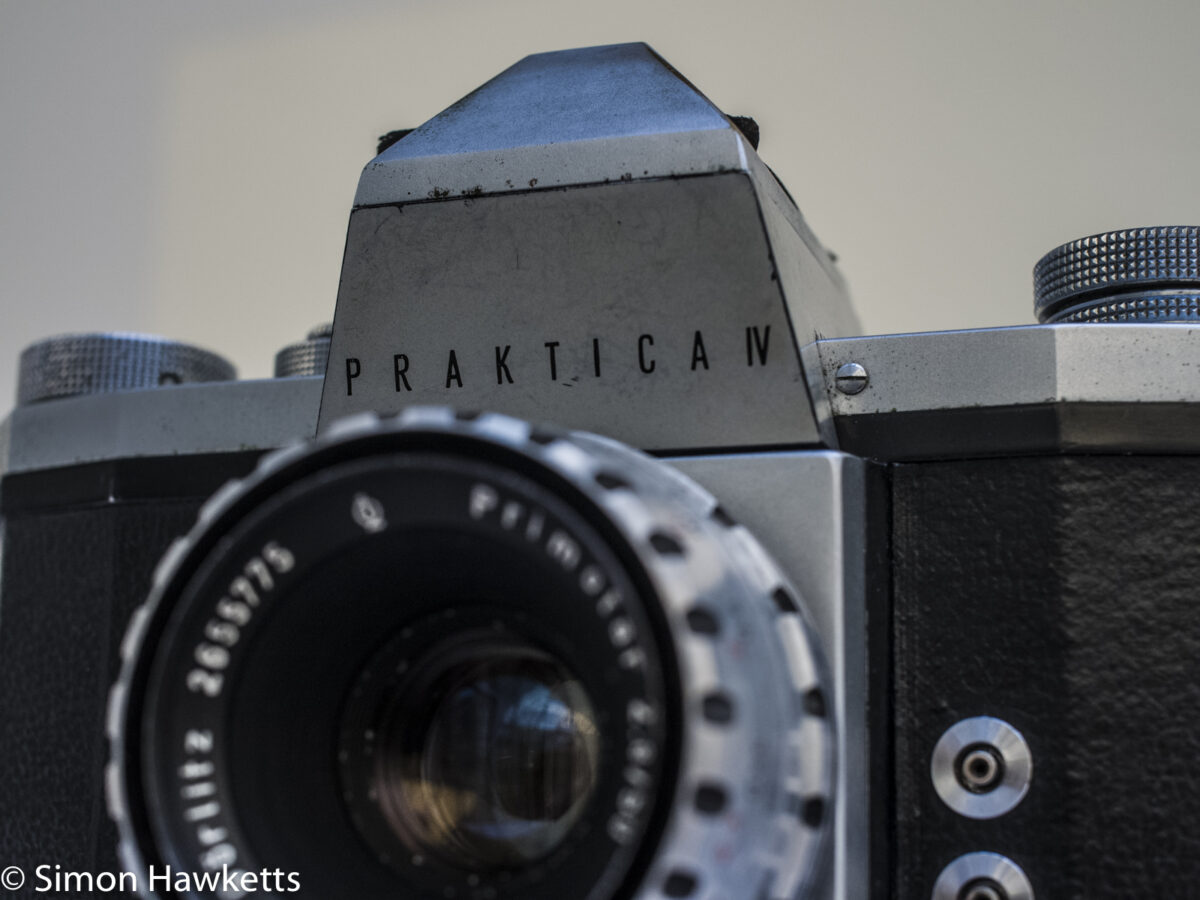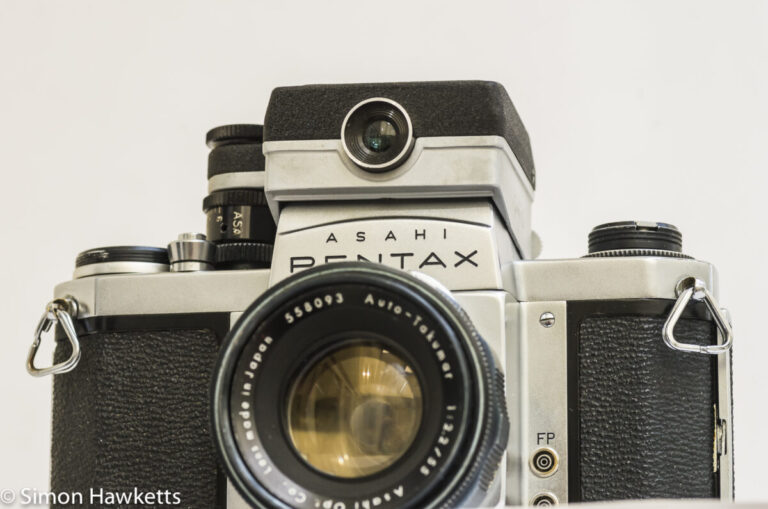Praktica IV 35 mm SLR
The Praktica IV 35 mm SLR was manufactured in East Germany between 1960 and 1964. There were a few different models – the one I have is a version 2, which was the first made by the newly formed Pentacon company, and is fitted with a Meyer-Optik Gorlitz Primotar 50 mm f/2.8 lens.
Praktica IV Images
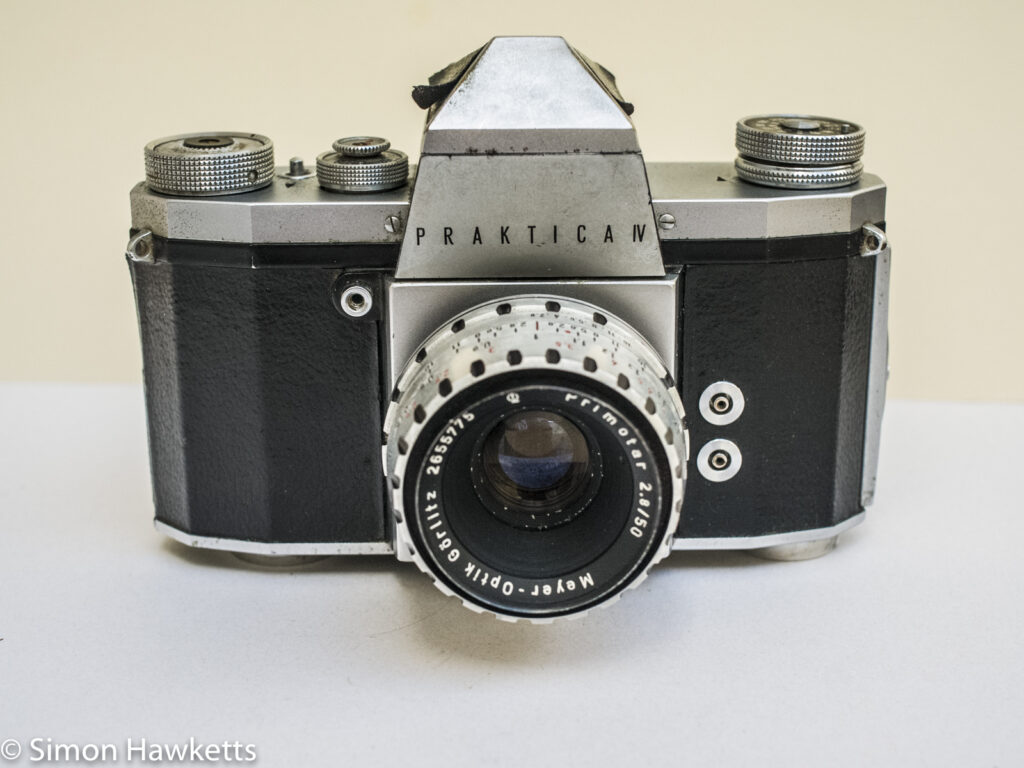
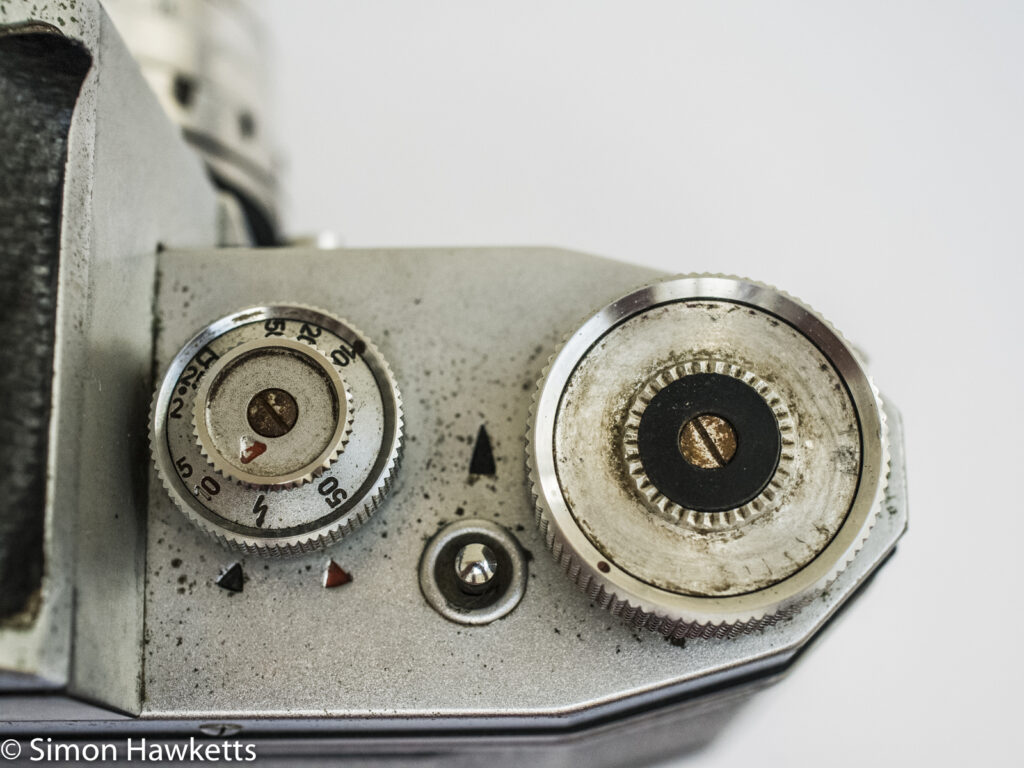
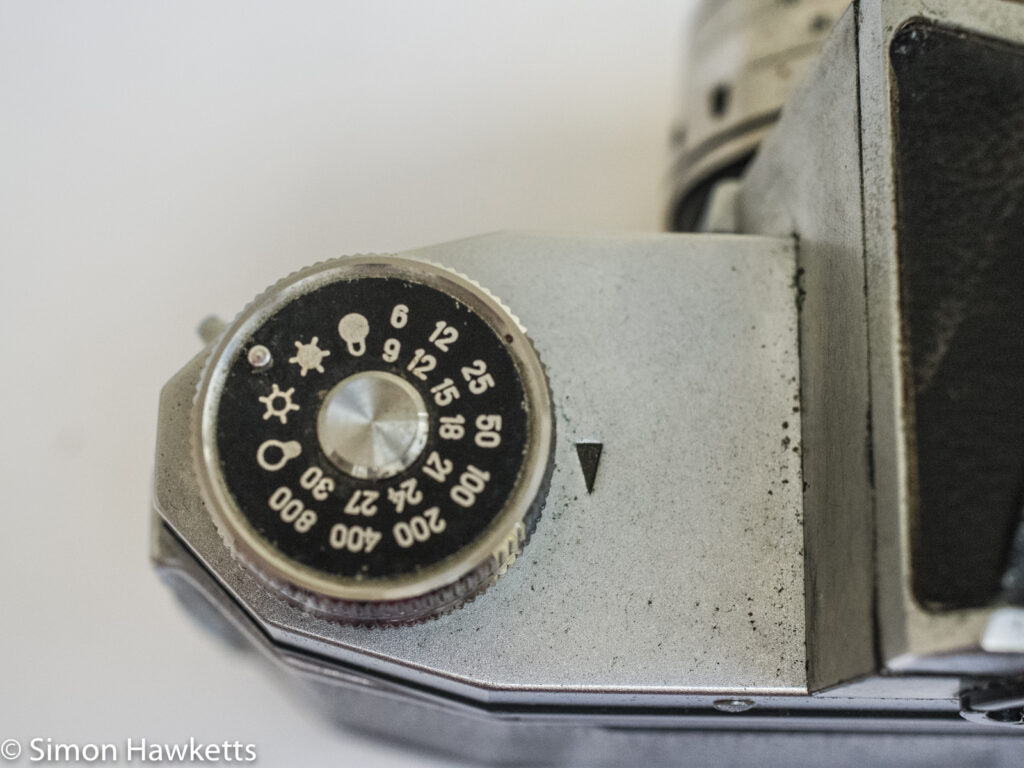

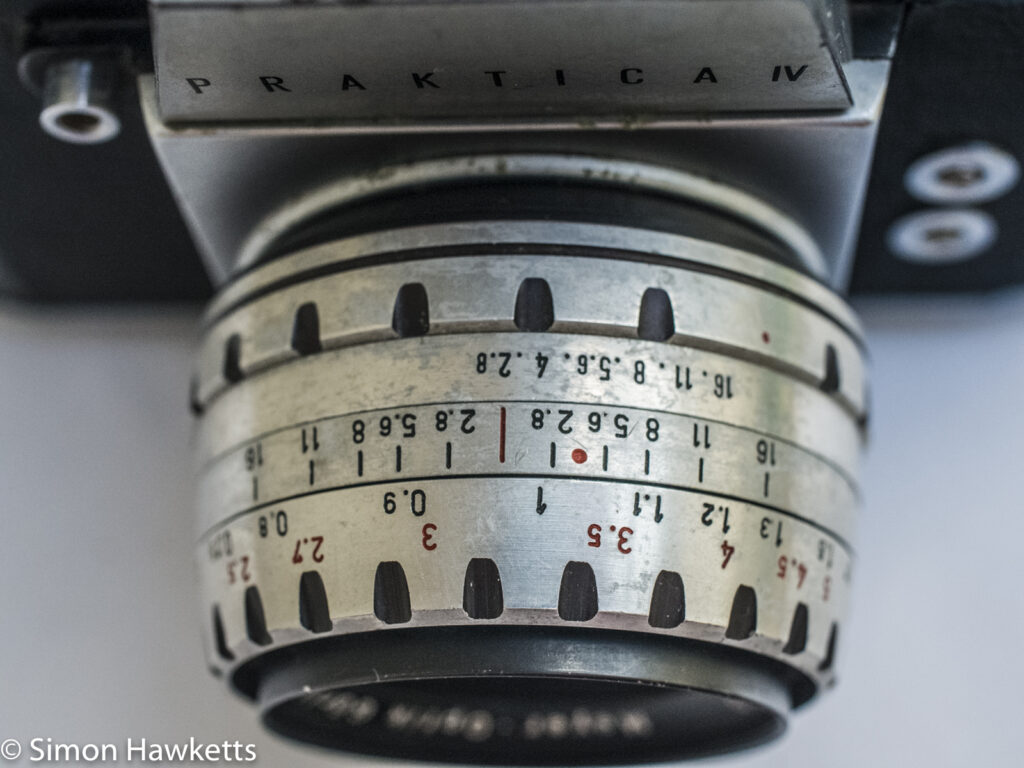
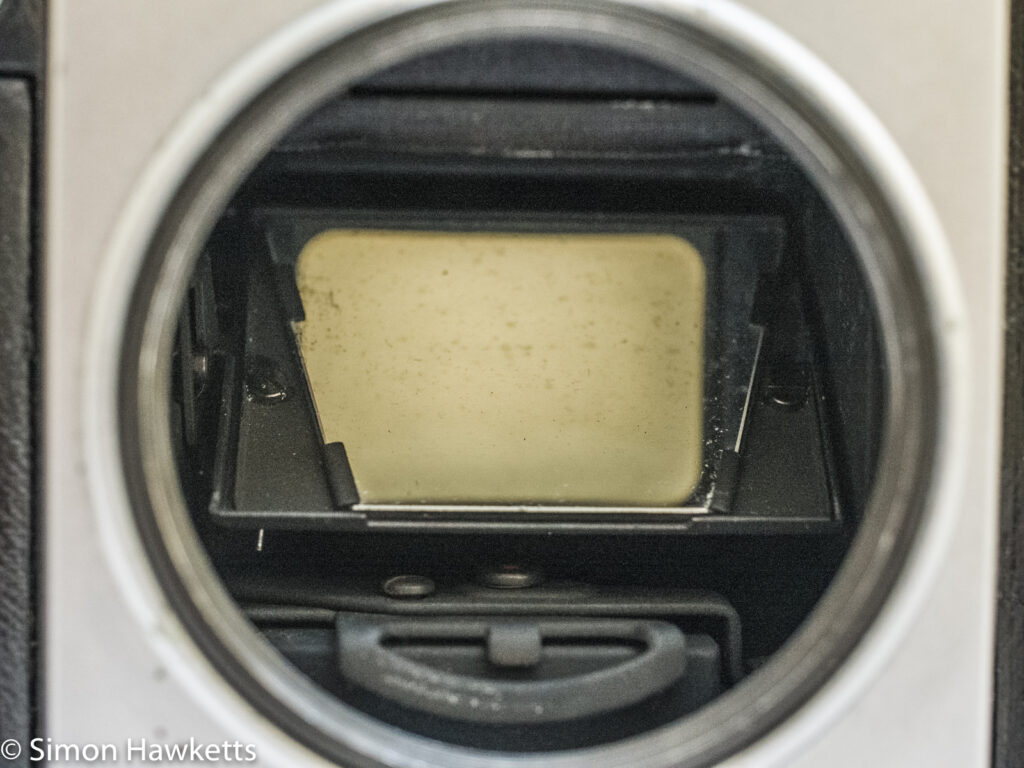
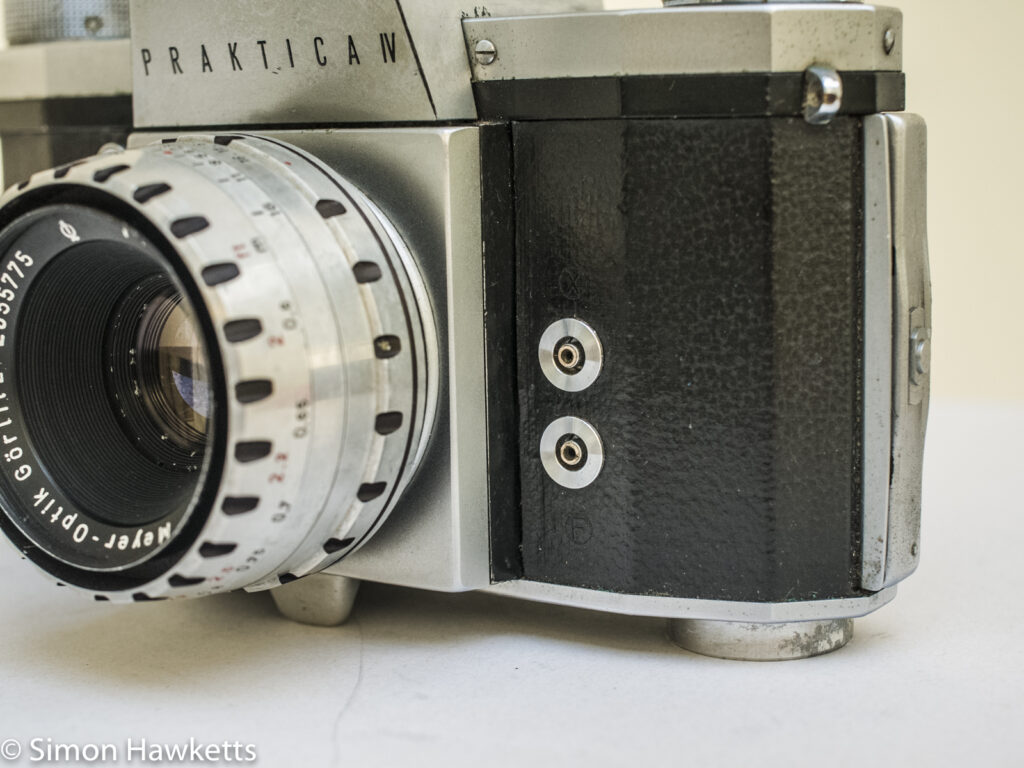

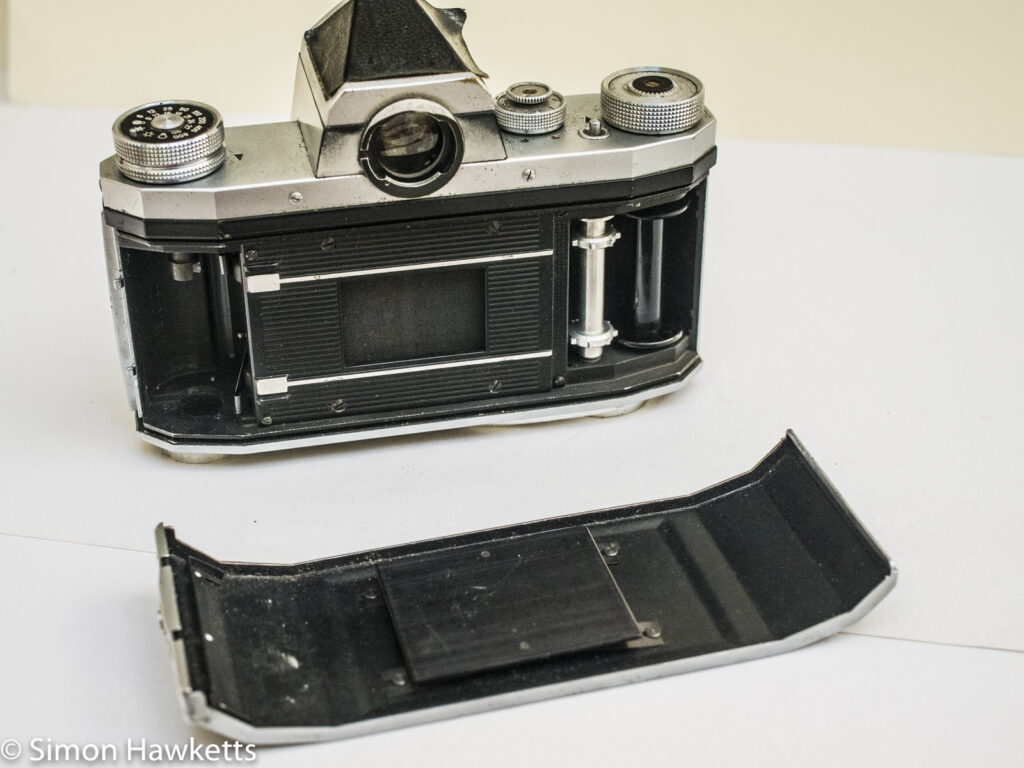
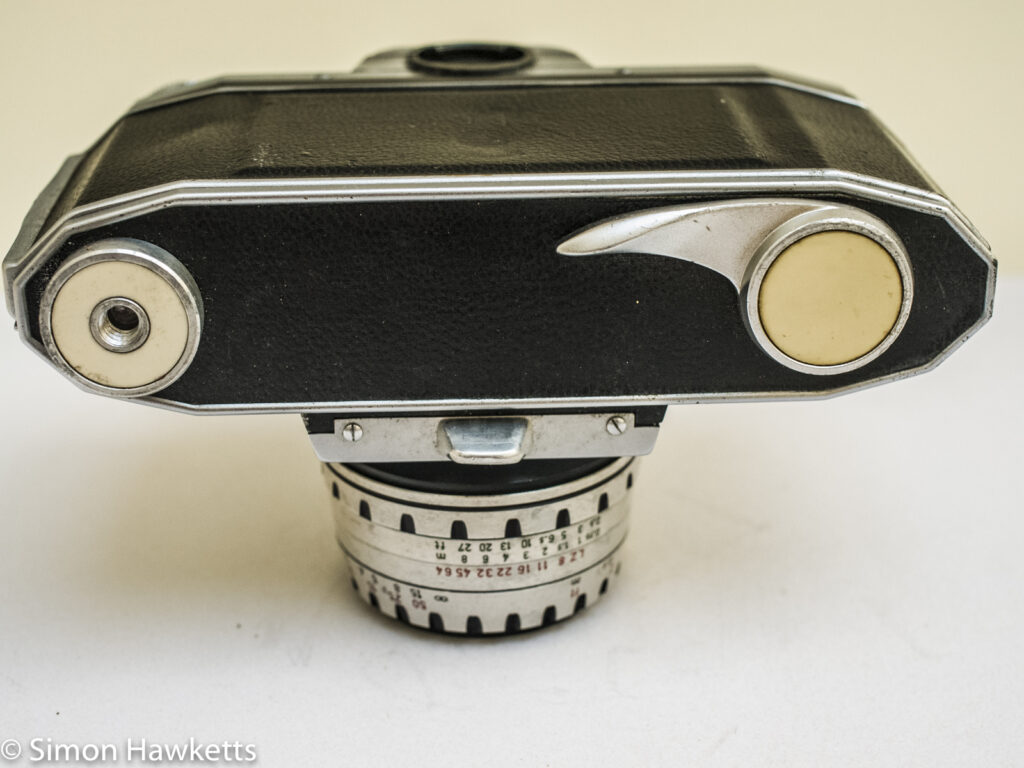
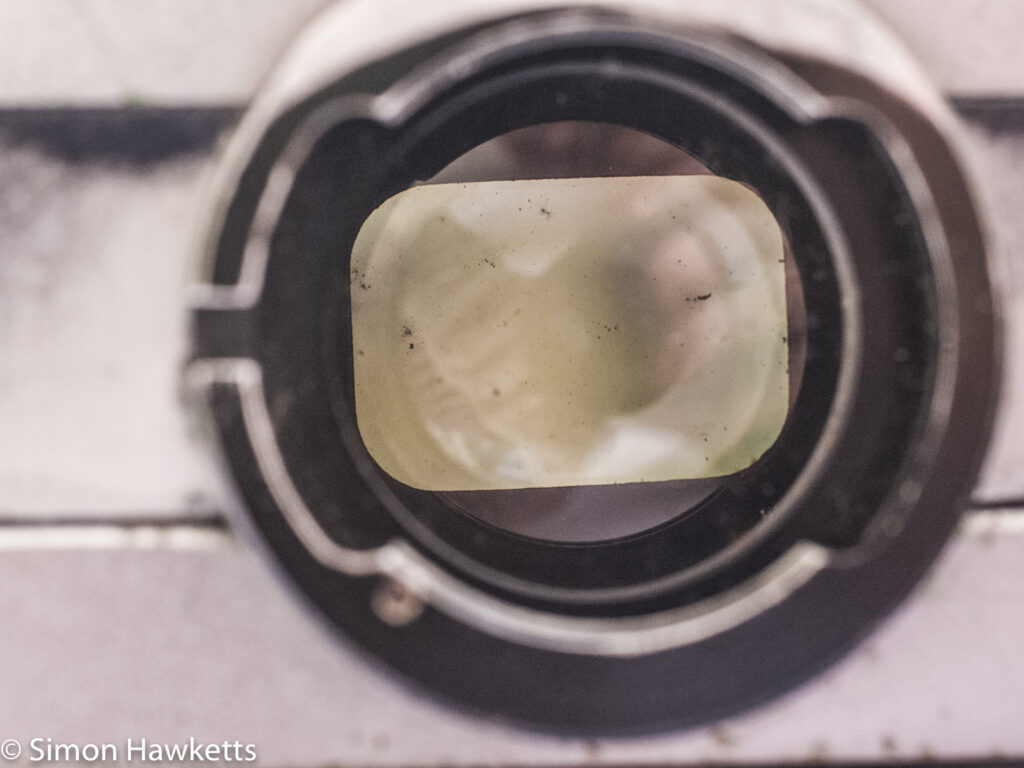
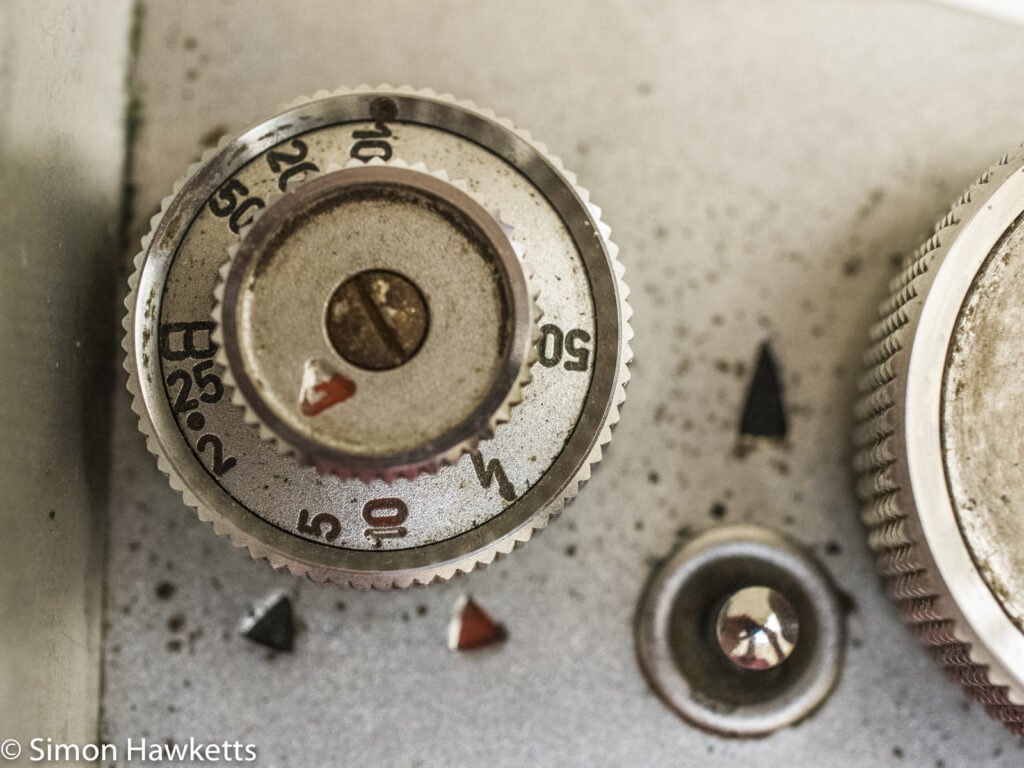
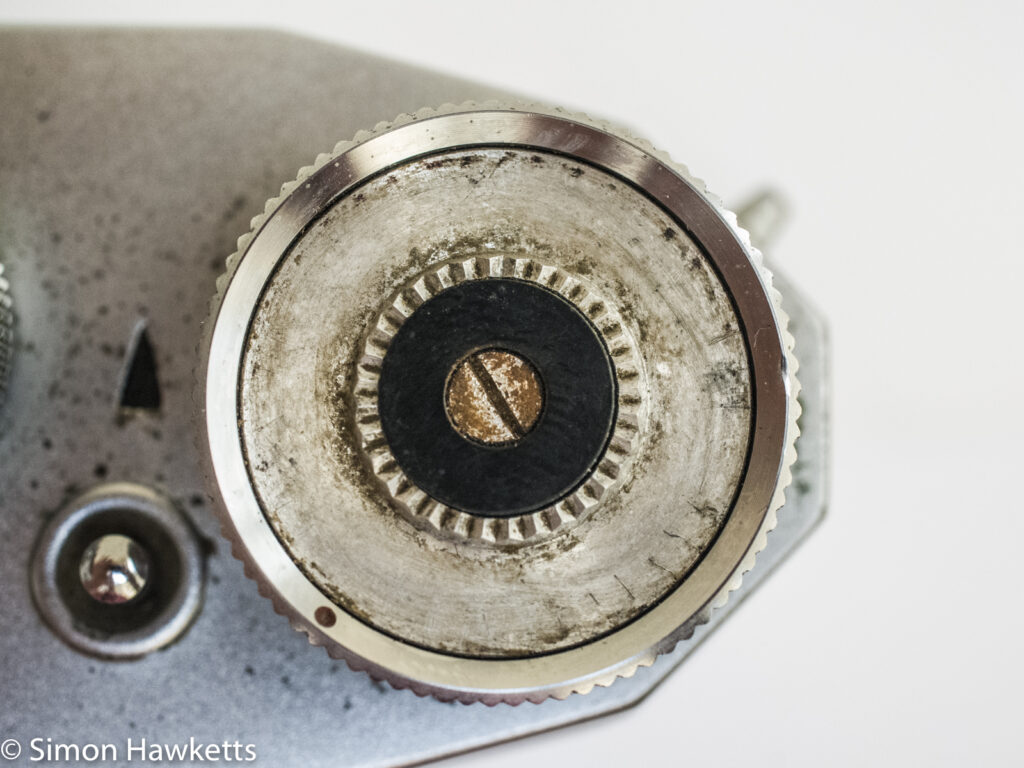
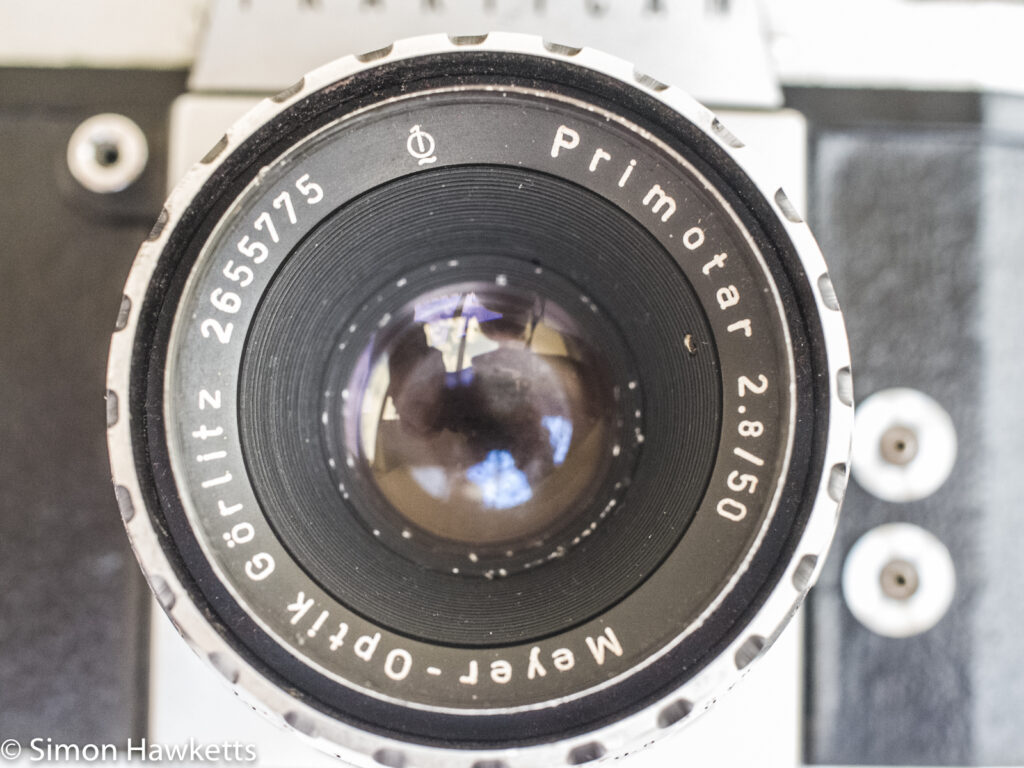
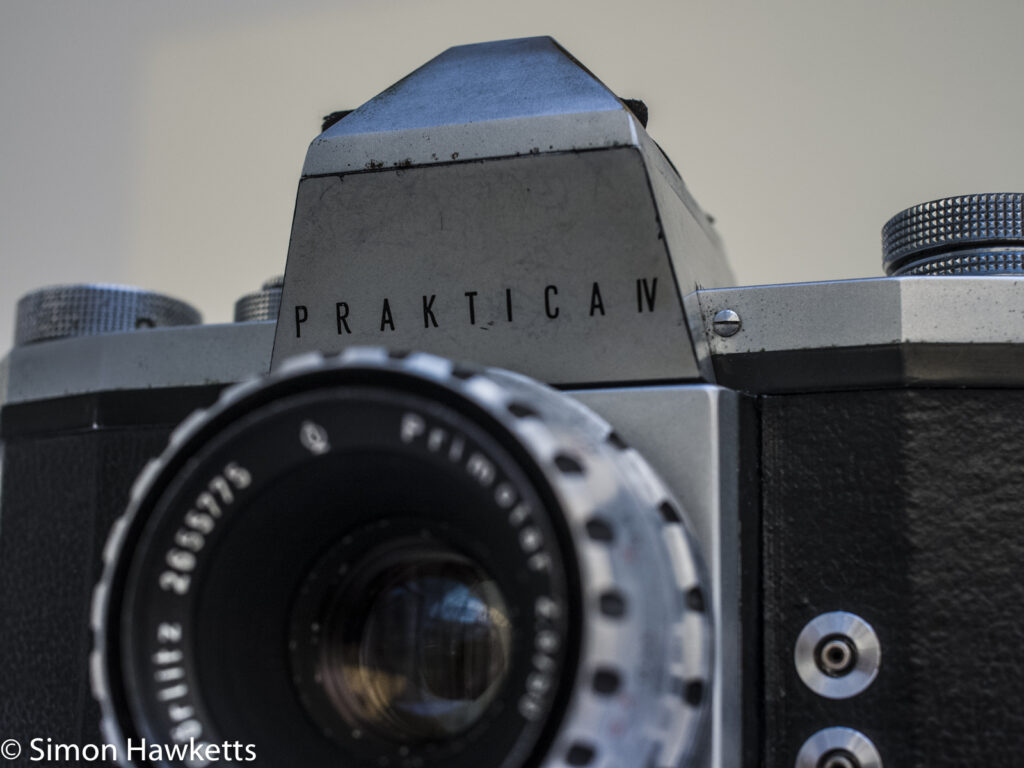
My Praktica IV Camera.
I bought this camera from a charity shop outlet on eBay for £7-10 and received the camera a few days later.
The general condition can only be described as average, with the following problems:
- The black leatherette on the top of the prism housing is pulling off
- The chrome work is dirty and in some areas has been worn off
- The frame counter markings are now unreadable
- The body covering is dirty
- The slow shutter speeds are intermittently working – sometimes the second curtain closes instantly, sometimes it gets stuck
- The mirror is very dirty
- The focus screen is also very dirty
- The lens bright work is corroded in places
Some of these issues are easy to fix and some are more complex, but it’s nice to have an example of an early Praktica camera, even if it gets used as spares for a nicer looking example later.
Praktica IV description.
This is a simple camera by today’s standards. There is no light meter, the aperture doesn’t stop down when the shutter is released, the mirror doesn’t return to the viewing position after the picture is taken and there are two shutter speed positions for slow and fast shutter speeds. The age of selfies was a long way in the future when this camera was designed, so no one thought about adding a self-timer and even simple focusing aids such as split rangefinders in the viewfinder didn’t make it to this model.
Shutter
The shutter assembly is a light tight cloth focal plane shutter which runs horizontally. It is coupled to the film advance and there are two film advance controls, a knurled knob on the top plate and a rapid advance lever on the bottom plate.
Advancing the film moves the mirror into position to compose the picture in the viewfinder, as well as cocking the shutter ready to take the picture. There is one shutter speed control, but there is another switch mounted above it which determines if the settings are for the slow speed shutter system or the fast speed shutter system. This is typical of cameras of the day – the Miranda D had a very similar arrangement.
The shutter release button is on the front panel which would have allowed a lens with a stop down lever to be used to fire the shutter if available, again similar to the Miranda D.
I was a bit disingenuous in the description above when I said the aperture doesn’t stop down when the shutter is release because this camera does actually have a lever to operate the aperture stop down pin. It would be more accurate to say it doesn’t stop down with the lens fitted – if an auto lens is fitted the camera will operate it, so that would have been another option for automatic aperture if a suitable lens were used.
Viewfinder
The viewfinder is a very straight forward ground glass screen without any additional information or aids to assist with exposure or focusing. Since as discussed above this lens doesn’t have automatic aperture, the focusing needs to be done at full aperture and then the lens stopped down for the exposure, and at full aperture with an f/2.8 lens the screen is fairly bright.
On my example, the focusing screen is very dirty and needs to be cleaned, which I think can probably be done once the top cover is removed. Since I need to fix the slow shutter speeds (which is probably just clean and lubricate) I will hopefully find that out later.
Lens
The Meyer-Optik Gorlitz Primotar lens is a little bit grubby and the body has what looks like aluminium corrosion, but optically it looks OK. The aperture is stepless, has markings in full stops from f/2.8 to f/16 and is constructed of 6 blades.
I didn’t realise until I took the lens to try it with my Sony NEX that the lens actually has a pre-set aperture – the back ring can be pulled towards the body of the camera to pre-set the aperture.
Other features
There is a neat feature with the rewind crank which allows it to split and lock into a handle to operate the rewind. This is shown in one of the pictures above and is the only camera I’ve seen with this operation.
Although there is no flash bracket, there is a pair of sync sockets to allow sync to both flash bulbs and electronic flash.
Praktica IV Specifications
- Praktica IV 35mm SLR
- Manufactured c1961
- Dual shutter speed dials
- B + 1sec to 1/500sec
- M42 lens mount
- Rapid advance lever + knurled control
- Front mounted shutter release
- X & FP flash sync
- Split rewind knob
- Aperture stop down arm
- Removable back for film load
- Meyer-optik Primotar 50mm f/2.8 lens
- Body Ser No: 421025
- Lens Ser No: 2655775
- Manual available on-line here
Discover more from Everything Vintage
Subscribe to get the latest posts sent to your email.

